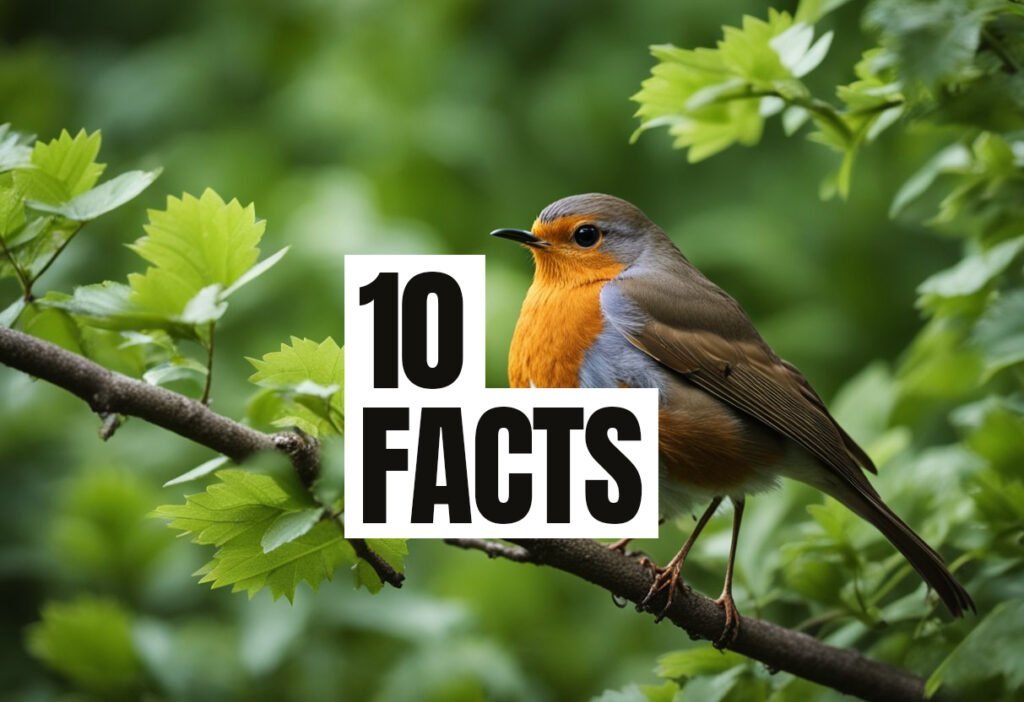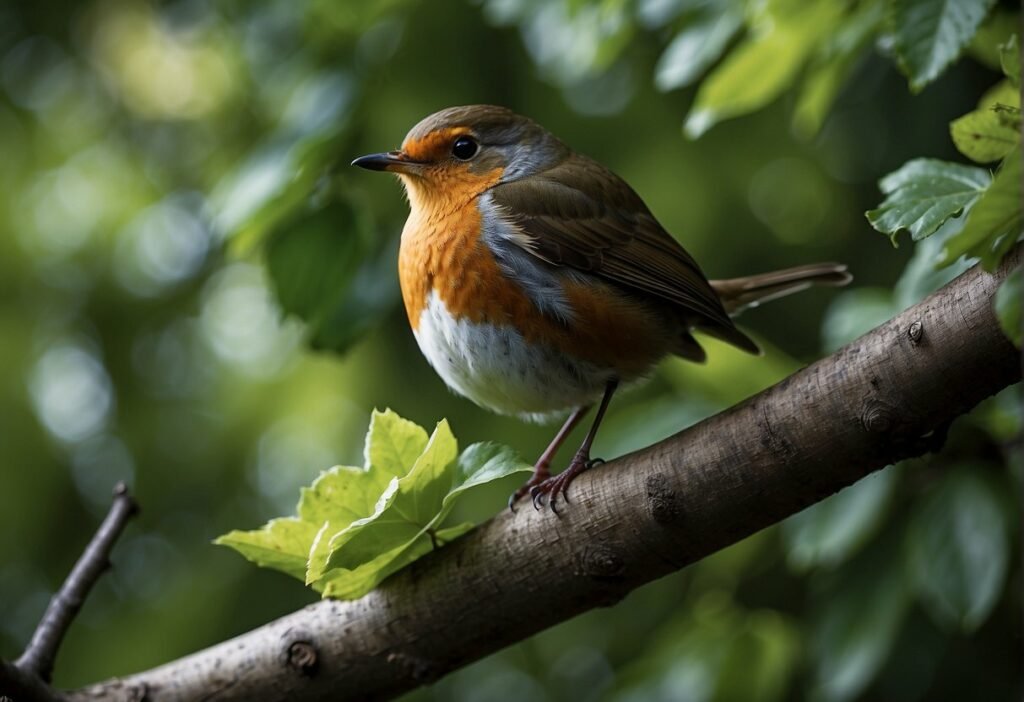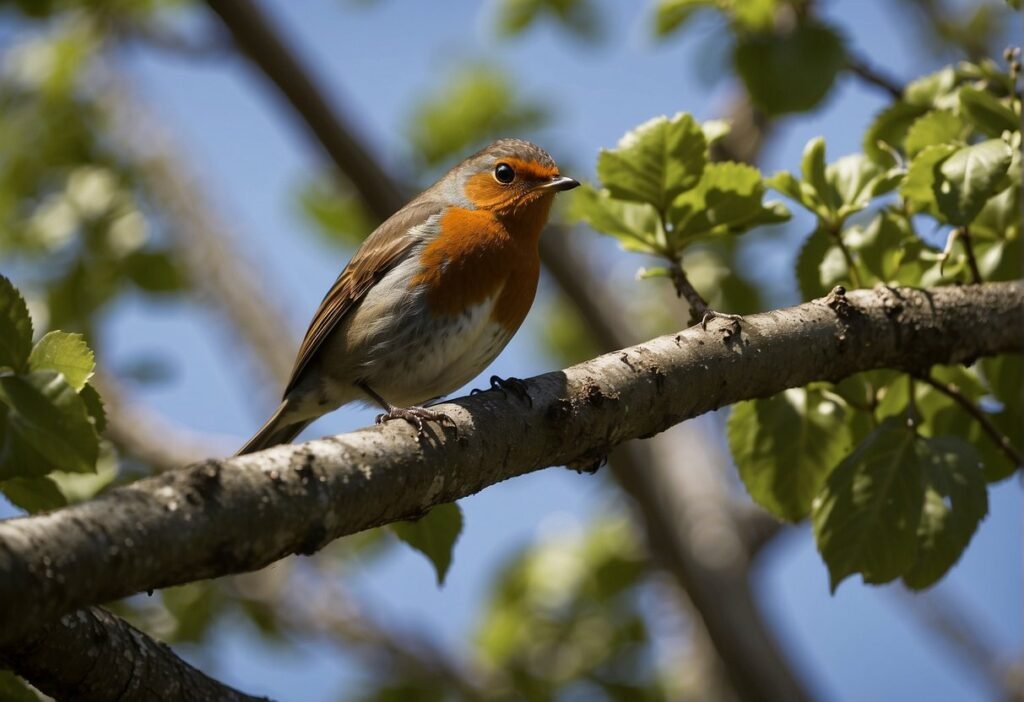American and European robins are two distinct species of birds that share a similar name and look. However, they are not closely related and have different physical and behavioral characteristics. Understanding these differences can help birdwatchers and nature enthusiasts identify and appreciate these birds better.

Taxonomy and Classification: American robins (Turdus migratorius) belong to the thrush family (Turdidae) and are native to North America. European robins (Erithacus rubecula), on the other hand, belong to the Old World flycatcher family (Muscicapidae) and are native to Europe, Asia, and North Africa. Although both species are called robins, they are not closely related and belong to different taxonomic families.
Physical and Behavioral Characteristics: American robins are larger than European robins and have a more prominent red breast. European robins have a reddish-orange breast that contrasts with their grayish-brown upper parts. American robins are migratory birds and spend winters in warmer regions, while European robins are non-migratory and can be found year-round in their native habitats.
Key Takeaways
- American and European robins are not closely related and belong to different taxonomic families.
- American robins are larger and have a more prominent red breast, while European robins have a reddish-orange breast that contrasts with their grayish-brown upper parts.
- American robins are migratory, while European robins are non-migratory.
Taxonomy and Classification
Scientific Classification
The American and European robins belong to different families and genera. The American robin is a member of the thrush family, Turdidae, and belongs to the genus Turdus. On the other hand, the European robin is a member of the Old World flycatcher family, Muscicapidae, and belongs to the genus Erithacus.
The scientific name of the American robin is Turdus migratorius, while the European robin’s scientific name is Erithacus rubecula. Both species are part of the order Passeriformes, which includes over half of all bird species.
Species Distinction
Although both American and European robins are classified as robins, they are distinct species and are not closely related. In fact, they are not even in the same family. The American robin and European robin have different physical characteristics, habitats, and behaviors.
The American robin is larger and has a more vibrant orange-red breast than the European robin. The European robin has a brownish-red breast and a distinctive white eye ring. Additionally, the American robin is migratory, while the European robin is non-migratory.
Furthermore, the American robin has several subspecies throughout its range, each with slightly different physical characteristics. In contrast, the European robin has no recognized subspecies.
In summary, the American and European robins are different species that belong to different families and genera. While they share the name “robin,” they have distinct physical characteristics and behaviors.
Physical and Behavioral Characteristics
Morphology and Appearance
American and European robins are two distinct species of birds with distinct physical characteristics. The American robin is slightly larger than its European counterpart, measuring between 9 to 11 inches in length, while the European robin measures between 5 to 6 inches. The American robin has a gray-brown back, a rusty-red breast, and a white belly, while the European robin has an orange-red breast and face, a brown back, and a white belly.
Diet and Feeding Habits
Both American and European robins have a similar diet, consisting of berries, insects, and earthworms. In the winter, they tend to feed on berries, while in the summer, they prefer insects and other invertebrates. They are known to forage on the ground, using their keen eyesight to spot potential prey.
Habitat and Distribution
American robins are native to North America, while European robins are found throughout Europe and western Asia. American robins prefer open woodland habitats, while European robins are more commonly found in gardens, parks, and hedgerows.
Reproduction and Lifespan
Both American and European robins are monogamous and breed during the spring and summer months. They build cup-shaped nests out of twigs, grass, and other materials and lay between 3 to 5 eggs. The eggs hatch after approximately 14 days, and the young fledge after about 2 weeks. The lifespan of both species is approximately 2 to 3 years.
Vocalizations and Sounds
Both American and European robins have a distinctive song, which is used to establish territory and attract mates. The American robin’s song is a series of clear whistles, while the European robin’s song is a melodic warble. Both species also use a variety of calls to communicate with one another.
Overall, while American and European robins share some similarities in their physical characteristics, diet, and breeding habits, they also have distinct differences in their appearance, habitat, and vocalizations.
Frequently Asked Questions
How do the sizes of American and European robins compare?
American robins are larger than European robins. An adult American robin is between 8 and 11 inches (20.3 to 27.9 cm) in length and weighs about 2.6 to 2.7 ounces (73.7 to 76.5 g). In contrast, an adult European robin is 4.9 to 5.5 inches (12.5 to 14 cm) long and weighs approximately 0.56 to 0.78 ounces (16 to 22 g), with a wingspan of about 7.9 to 8.7 inches (20-22 cm).
Are there differences in the plumage between male and female American robins?
Male and female American robins have similar plumage. Both sexes have a brownish-gray back, a reddish-orange breast, and a white belly. However, males tend to have darker heads and brighter orange breasts than females.
What distinguishes the eggs of American robins from those of European robins?
The eggs of American robins are larger than those of European robins. American robin eggs are blue-green and measure about 1.1 to 1.3 inches (2.8 to 3.3 cm) long and about 0.8 to 0.9 inches (2.0 to 2.3 cm) wide [1]. In contrast, European robin eggs are smaller and more rounded, measuring about 0.8 to 0.9 inches (2.0 to 2.3 cm) long and about 0.6 to 0.7 inches (1.5 to 1.8 cm) wide.
What are the key identifying features of a European robin?
European robins have a reddish-orange breast, a brown back, and a white belly. They also have a distinctive white eye-ring and a small, thin beak. Additionally, European robins have a more upright posture than American robins.
Is there a notable difference between the American robin and its Canadian counterpart?
There is no notable difference between the American robin and its Canadian counterpart. Both birds belong to the same species, Turdus migratorius, and have similar physical characteristics and behavior.
How does the appearance of a red robin differ from that of an American Robin?
A “red robin” is not a distinct species of bird, but rather a nickname for the European robin. The European robin has a reddish-orange breast, brown back, and white belly, while the American robin has a brownish-gray back, reddish-orange breast, and white belly.




